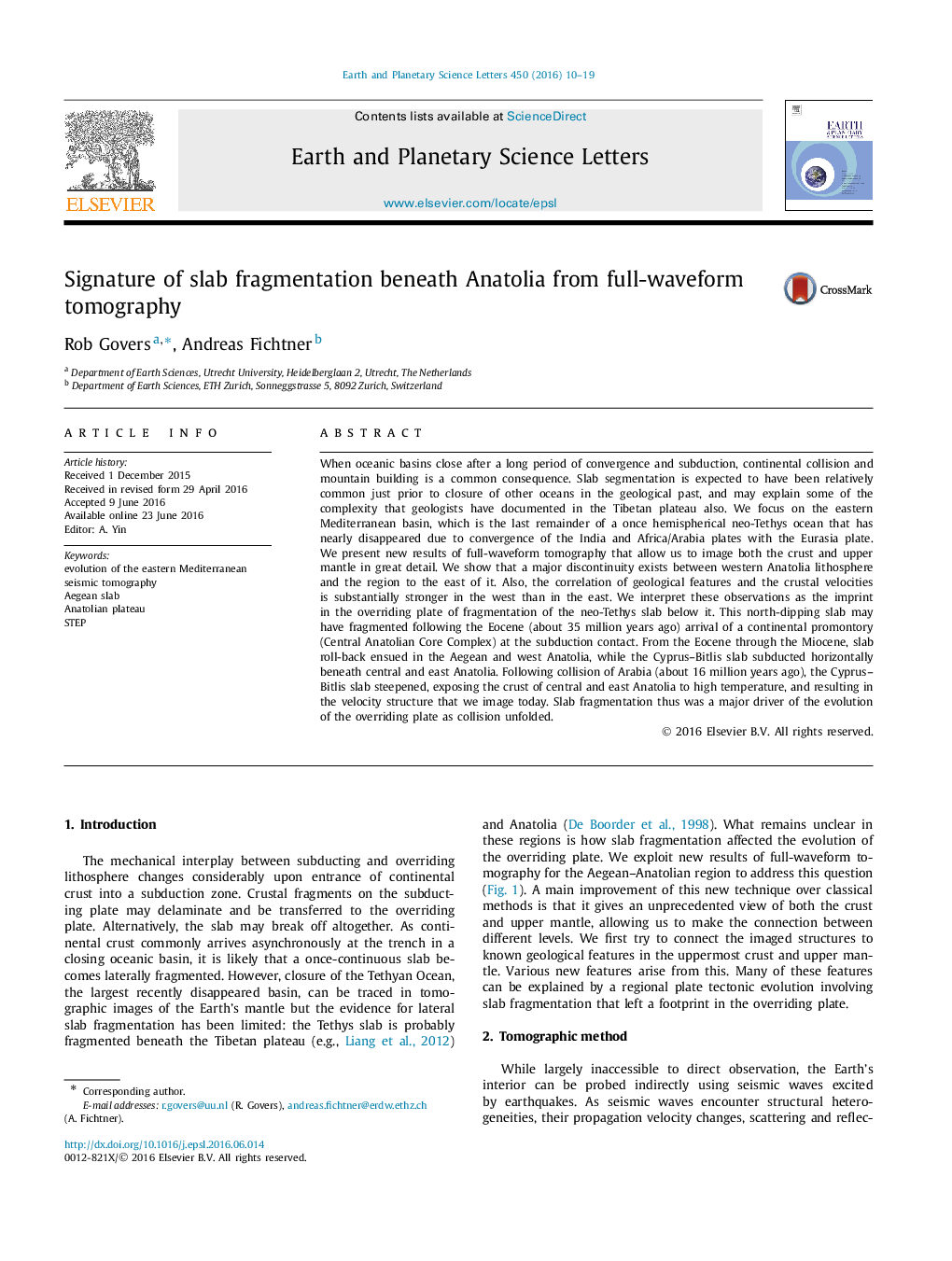| کد مقاله | کد نشریه | سال انتشار | مقاله انگلیسی | نسخه تمام متن |
|---|---|---|---|---|
| 6427283 | 1634706 | 2016 | 10 صفحه PDF | دانلود رایگان |
- Full-waveform inversion results (8-200 s) for Anatolia region.
- High-resolution Vs tomographic model for both crust and upper mantle.
- Confirms earlier geological structures and mantle anomalies.
- One of the new features is a major velocity dichotomy.
- New evidence for slab fragmentation dominating the regional tectonic evolution.
When oceanic basins close after a long period of convergence and subduction, continental collision and mountain building is a common consequence. Slab segmentation is expected to have been relatively common just prior to closure of other oceans in the geological past, and may explain some of the complexity that geologists have documented in the Tibetan plateau also. We focus on the eastern Mediterranean basin, which is the last remainder of a once hemispherical neo-Tethys ocean that has nearly disappeared due to convergence of the India and Africa/Arabia plates with the Eurasia plate. We present new results of full-waveform tomography that allow us to image both the crust and upper mantle in great detail. We show that a major discontinuity exists between western Anatolia lithosphere and the region to the east of it. Also, the correlation of geological features and the crustal velocities is substantially stronger in the west than in the east. We interpret these observations as the imprint in the overriding plate of fragmentation of the neo-Tethys slab below it. This north-dipping slab may have fragmented following the Eocene (about 35 million years ago) arrival of a continental promontory (Central Anatolian Core Complex) at the subduction contact. From the Eocene through the Miocene, slab roll-back ensued in the Aegean and west Anatolia, while the Cyprus-Bitlis slab subducted horizontally beneath central and east Anatolia. Following collision of Arabia (about 16 million years ago), the Cyprus-Bitlis slab steepened, exposing the crust of central and east Anatolia to high temperature, and resulting in the velocity structure that we image today. Slab fragmentation thus was a major driver of the evolution of the overriding plate as collision unfolded.
174
Journal: Earth and Planetary Science Letters - Volume 450, 15 September 2016, Pages 10-19
